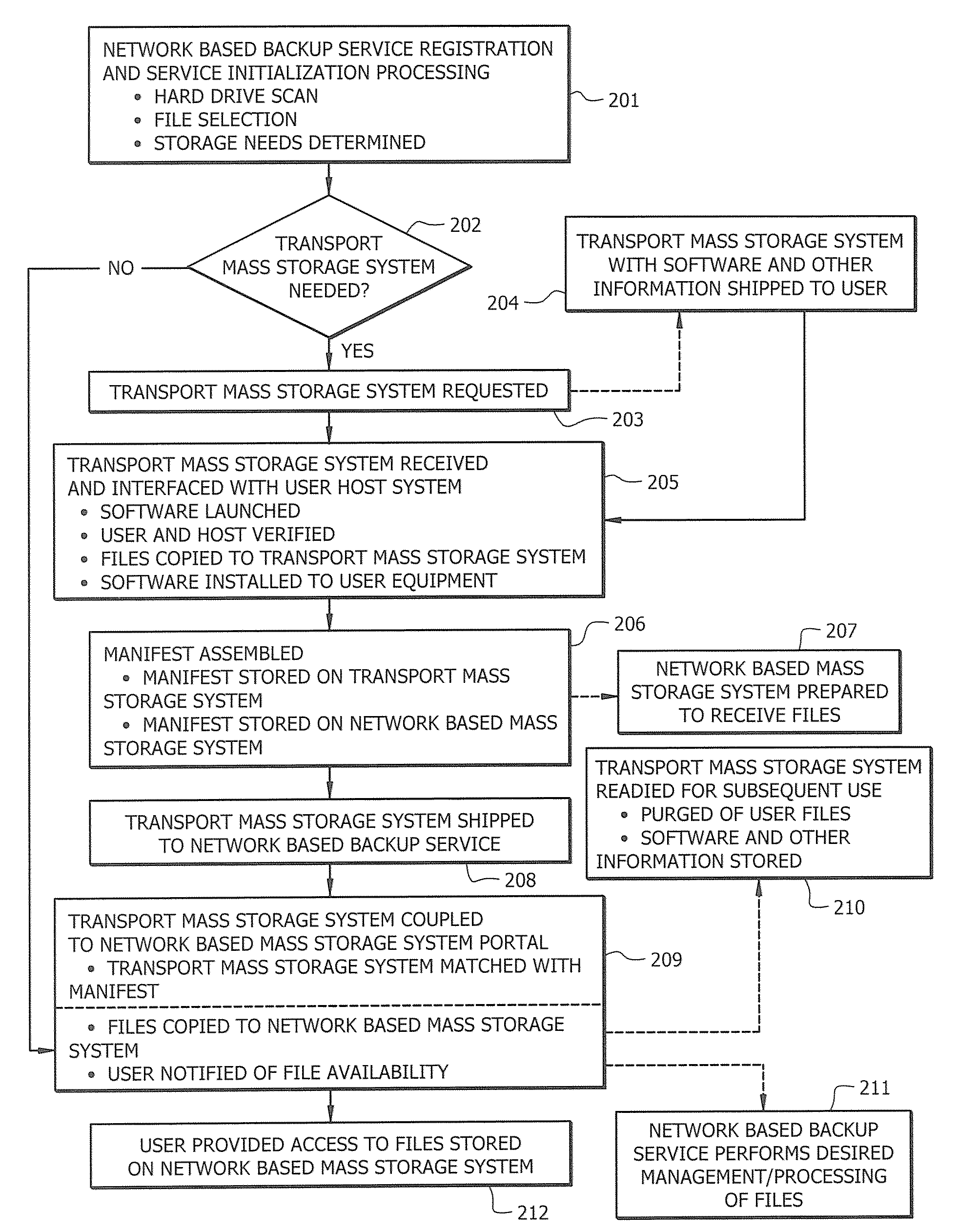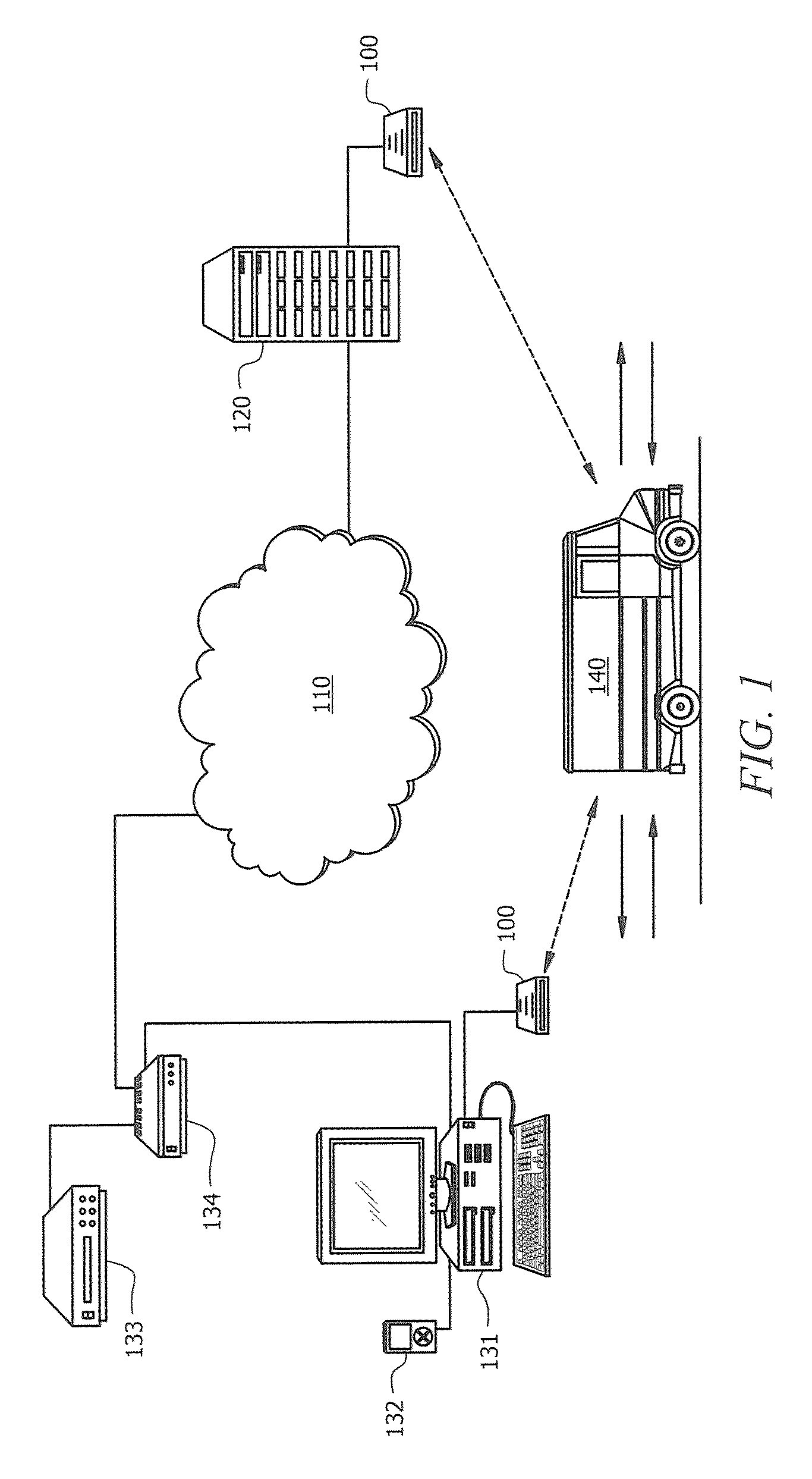Although the intangible nature of such digital data files has provided advantages in transmission, storage, and
access to information, their use is not without
disadvantage.
For example, users have often discovered that such digital data files may be damaged, corrupted, or otherwise lost, thereby preventing access to their data.
It is not uncommon for a
mass storage system or its host system (e.g., PC, PES, PDA, PCS, etc.) to fail or be damaged to an extent that digital data files are not recoverable.
Similarly, such systems may themselves be lost or stolen, taking their digital data files with them.
For example, the user must acquire, interface, and maintain the duplicate or second
mass storage system, which results in added cost and effort.
Moreover, the process of identifying the particular digital data files for duplicating on the second
mass storage system, managing the duplication process, and periodically supplementing the backed up digital data files with new or modified digital data files is often overwhelming for many users.
Thus, if the host system is rendered inoperable (e.g., due to fire, electrical surge,
lightning strike,
computer virus, etc.) or is otherwise unavailable (e.g., due to loss, theft, etc.), the second
mass storage system containing the backup digital data files is likewise unavailable or inoperable.
Additionally, as with the host system, external mass storage systems are vulnerable to breakage and drive failure, the timing of which is difficult to predict.
However, this solution has not provided an
ideal solution for providing digital
data file backup for a number of reasons.
For example, the process of identifying the particular digital data files for duplicating on the second
mass storage system, managing the duplication process, and periodically supplementing the backed up digital data files with new or modified digital data files continues to often be overwhelming for many users.
Perhaps the greatest impediment to the use of a network based solution is the time and network resources required for backing up large amounts of digital data files.
However, asymmetrical
broadband Internet connections do not provide an optimal interface for uploading large amounts of data as is done using a network based digital
data file backup solution.
For example, the links often do not meet the theoretical throughputs, but rather provide much lower effective
throughput, such as due to noisy links, collisions with other network traffic, host
computer multitasking, dropped links which must be reestablished, etc.
Such a lengthy transfer of data is not conducive to a good user experience.
For example, the use of the host system and / or other system utilized for the data uploading is substantially impacted by the data transfer.
Similarly, other systems utilizing the
network link (e.g., other PCs linked to
the Internet through the same
broadband connection) may be negatively impacted by the reduced availability of the network link.
If the network link suffers an interruption or other anomaly, the data transfer may halt until the user restarts the data transfer.
Such network interruptions are not uncommon, particularly within the number of days required for the data transfer, and can result in appreciable
delay between the interruption and the resuming of data transfer.
Further exacerbating the foregoing disadvantages associated with the use of a network based solution for digital data file backup are the restrictions on network use often implemented by
Internet service providers (ISPs) and / or other service providers.
Even if such service providers wished to accommodate data transfers for backup purposes, it is difficult for the service providers to distinguish between network consumption for legitimate data backup purposes and the less desirable, but equally network resource intensive, peer-to-peer exchange of music or movie content.
Accordingly, service providers have blindly implemented decreases in available bandwidth and / or temporary termination of network links where a user is consuming more than some threshold amount of bandwidth for a period of time.
Such restrictions negatively
impact the already poor user experience associated with the use of network based solutions for digital data file backup available today.
 Login to View More
Login to View More  Login to View More
Login to View More 


